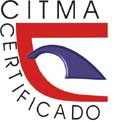Génesis y cristalinidad como factores a considerar durante la cuantificación de fases minerales arcillosa: casos de studio Cayo Guam y Dumañuecos
Keywords:
XRD, cuantificación mineralógica, arcilla caoliníticaAbstract
El estudio se centró en la influencia de la génesis geológica y el grado de cristalinidad en la cuantificación de fases minerales y contenido amorfo en arcillas cubanas. Se tomaron dos depósitos de arcilla con diferente génesis geológica y las muestras se caracterizaron mediante difracción de rayos X y técnicas de análisis de la fracción arcillosa. Se establecieron paragénesis dominantes para cada depósito, dominadas por caolinita, y se encontraron relaciones útiles entre diferencias estructurales y de tamaño de partículas con la génesis geológica, que pueden afectar una cuantificación adecuada. Se determinó que el nivel de meteorización condiciona el grado de cristalinidad, que a su vez tiene una fuerte relación con factores que inciden en una adecuada cuantificación. Finalmente, se establecieron los elementos fundamentales para formular una metodología integral para la adecuada caracterización y cuantificación de las fases arcillosas.Downloads
References
Bish, D. L. & Howard, S. A. 1988. Quantitative phase analysis using the Rietveld method. Journal of Applied Crystallography, 21(2). https://doi.org/10.1107/S0021889887009415
Brigatti, M. F.; Galan, E. & Theng, B. K. G. 2006. Structures and Mineralogy of Clays Minerals. Developments in clay science, 1: 19-86. https://scholar.google.es/scholar?cluster=8895391783973783217&hl=es&as_sdt=0,5
Brindley, G. 2015. Quantitative X-ray Mineral Analysis of Clays. In Crystal Structures of Clay Minerals and their X-Ray Identification (p. 411–438). https://doi.org/10.1180/mono-5.7.
Chang-Rodríguez, A., Chang-Rodríguez, A., Tauler-Ferre, E., Proenza-Fernández, J. A. y Rojas-Purón, A. L. 2016. Mineralogía del yacimiento laterítico niquelífero San Felipe, Camagüey, Cuba. Minería y Geología, 32(1): 28–47. http://revista.ismm.edu.cu/index.php/revistamg/article/view/1230.
Cullity, B. D. & Weymouth, J. W. 1957. Elements of X-Ray Diffraction. American Journal of Physics, 25(6). https://doi.org/10.1119/1.1934486.
Dill, H. G. 2016. Kaolin : Soil, rock and ore. From the mineral to the magmatic, sedimentary and metamorphic environments. Earth/Science Reviwes, 161: 16-129.
Gualtieri, A. F. 2000: Accuracy of XRPD QPA using the combined Rietveld-RIR method. Journal of Applied Crystallography, 33(2): 267–278. https://doi.org/10.1107/S002188989901643X.
Hill, R. J. & Howard, C. J. 1987: Quantitative phase analysis from neutron powder diffraction data using the Rietveld method. Journal of Applied Crystallography, 20(6). https://doi.org/10.1107/S0021889887086199.
Labrador, M., Proenza, J. A., Galí, S., Melgarejo, J. C., Tauler, E., Rojas-Purón, A.,. y Rodríguez-Vega, A. 2006. Minerales de Mn-Co-Ni en las lateritas de Cuba oriental: resultados preliminares. Macla, 6, 281–284. http://hdl.handle.net/2445/108223.
Merendón-Barcina, T. 2016. Estudio del desorden estructural en minerales de la arcilla. http://hdl.handle.net/10902/8280.
Moore, M. & Reynolds, R. J. 1997. X-ray Diffraction and the Identification and Analysis of Clay Minerals. New York: Oxford University Press.
Ramírez, M. 2016. Estudio de la cristaloquímica y cuantificación por difracción de rayos x en materiales tipo hidrotalcita procedentes de la química del cemento (Tesis doctoral). Universidad Autónoma de Madrid UAM.
Ufer, K., Ii, G. R.; Iii, R. K., Stanjek, H., Dohrmann, R., Bergmann, J., Roth, G., Kleeberg, R., Stanjek, H., Dohrmann, R. & Bergmann, J. 2004. Description of X-ray powder pattern of turbostratically disordered layer structures with a Rietveld compatible approach. 219(9): 519–527. https://doi.org/10.1524/ZKRI.219.9.519.44039/HTML.
Velde, B. 1995. Origin and Mineralogy of the clays. In: Origin and minerallogy of clays: clays and the enviroment (p. 8-42). Berlin, Heidelberg: Springer Berlin Heidelberg.
Published
How to Cite
Issue
Section
Copyright (c) 2024 Livan García-Obregón, Luis Alberto Pérez García, Adrián Alujas-Díaz, Angel Eduardo Espinosa-Borges, Astrid Kirsch

This work is licensed under a Creative Commons Attribution-NonCommercial 4.0 International License.
- Authors retain copyright and guaranteeing the right magazine to be the first publication of the work as licensed under a Creative Commons Attribution-NonCommercial that allows others to share the work with an acknowledgment of the work's authorship and initial publication in this journal.
- Authors may establish separate supplemental agreements for the exclusive distribution version of the work published in the journal (eg, place it in an institutional repository or publish it in a book), with an acknowledgment of its initial publication in this journal.
- Authors are allowed and recommended to disseminate their work through the Internet (e.g., in institutional telematic archives or on their websites) before and during the submission process, which can produce interesting exchanges and increase citations of the published work. (See The effect of open access)



